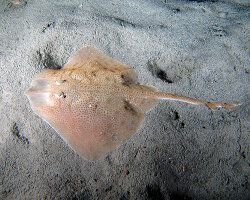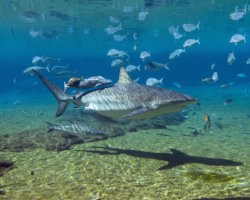Sealife guideThe Rajiformes orderThe taxonomy of marine species
Explore the taxonomy of the sea vertebrates including the cetaceans like the whales or the dolphins, the sea birds, the fish, the sharks and the sea turtles !
The Rajidae family is the most diverse group of rays. These benthic cartilaginous fishes are characterized by a flattened, diamond-shaped body, broad pectoral fins fused to the head and a relatively thin tail that typically has two dorsal fins. They are primarily marine and inhabit sandy or muddy bottoms from coastal areas down to great depths, where they feed on small fish, crustaceans and mollusks. Being oviparous, they lay eggs protected by a hard capsule, often called a "mermaid's purse". Due to their slow growth, late sexual maturity and low reproductive rate, many species are vulnerable to overfishing and bycatch.

Big skate
(Raja binoculata)
(Raja binoculata)

Thornback ray
(Raja clavata)
(Raja clavata)
Our latestUpdates

Friday, December 19th 2025
The magic of Christmas decorations
Discover Christmas decorations in Florida: giant trees, illuminated palm trees, magical light displays and tropical settings to experience the holiday magic under the sun.

Monday, December 15th 2025
The dusky shark
Discover the dusky shark, one of the world's largest coastal sharks, and learn why this powerful predator is essential to marine ecosystems.

Friday, December 12th 2025
Christmas magic at Disney hotels
Experience the magic of Christmas at Disney hotels: enchanting decorations, giant Christmas trees, dazzling lights and a festive holiday atmosphere.
Photo of the Day

Poisson pégase
(Eurypegasus draconis)
(Eurypegasus draconis)
